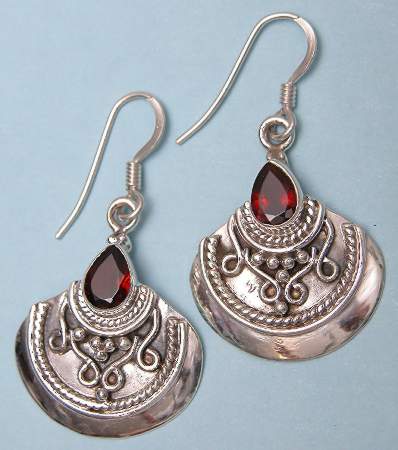Beads
A bead is a small, decorative object that is usually pierced for threading or stringing. The word bead comes from the Anglo Saxon words bidden (to pray) and bede (prayer.) The history of beads is long and rich. Beads can be made of many types of materials. The earliest beads were made of convenient natural materials; when found, these could be readily drilled and shaped. As human technology became capable of obtaining or working with more difficult natural materials, those were added to the range of available substances. The same was true of new synthetic materials when created. In modern manufacturing, the most common bead materials are wood, plastic, glass, metal, and stone.
Glass was discovered about 3,400 years ago, and since then has become a very important material for the bead-maker, user and wearer.
A pair of beads made from Nassarius sea snail shells, approximately 100,000 years old, are thought to be the earliest known examples of jewellery. Beadwork is the art or craft of making things with beads. Beads can be woven together with specialized thread, strung onto thread or soft, flexible wire, or adhered to a surface (e.g. fabric, clay).
Beads may be divided into several types of overlapping categories, based on different criteria such as component materials, manufacturing process, place or period of origin, surface patterning, or general shape. In some cases, such as millefiori and cloisonné beads, multiple categories may overlap in an inseparably interdependent fashion.
Prayer beads are known world-wide, and help the user recite prayers and keep track of the sequence and number of the prayers. Worry beads, also common around the world, help with decision-making, and keep the hands busy. Beads continue to be used as talismans to protect the wearer against evil, and as amulets to bring wisdom and fortune.
The history of beads dates as far back as 40,000 years with the advent of modern people. They have been made by every culture since then.
In North America, the use of beads and their manufacture was limited to a difficult production in gold, jade, bone, blue-green stone turquoise and hand polished shell beads. Thousands of years prior to European contact, geographical location determined the kinds of beads produced. Prehistoric Southwestern cultures traded turquoise throughout the western regions and into Mexico. Marine shells from the Florida coasts were traded north and made into beads in Illinois. They were distributed to the agricultural societies of the Mississippi, Ohio and Illinois River valleys about A.D. 1100.
Historically, beadworking was part of a social pastime where friends and family would bead together at the same table and discuss the issues of the day or just socialize. Today, cosmopolitan issues generally overtake friends and families and the individual must find time for the craft.




.jpg)




